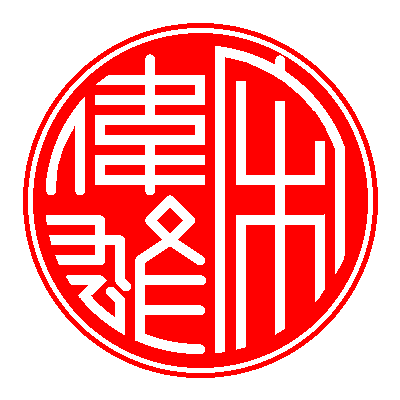| Character & Background \ Surname Postition | Surname on the right | Surname on the left |
|---|---|---|
| Red characters on a white background |  |  |
| White characters on a red background |  |  |
I fall outside these main categories, since I use handwriting to sign documents. On the internet, webpages are probably the best place to "stamp" one's mark on the work created, (- a logo if you will), since the concept of layout gives the work some artistic value. You will have seen some chops appearing in this site, all of which are of my name. It is easy to create your own in graphics software. This is what I have done, since I do not actually possess a true chop.
Three character chops show the surname as the larger of the three characters. The given names are stacked one on top of the other adjacent to the surname.
Here is my name in the four combinations mentioned.
| Character & Background \ Surname Postition | Surname on the right | Surname on the left |
|---|---|---|
| Red characters on a white background |  |  |
| White characters on a red background |  |  |
Likewise, the characters may appear in different forms. For clarity, often the characters appear as Kai Shu or regular style. The style used in the four chop imprints above are all called Xiao Zhuan or small seal characters. A number of books spring to mind when wanting to see different forms of Chinese writing. The most easily available is found in the Tung Shu, a chinese almanac. It has a section called the Si Ti Qian Zi Wen (  ), or Thousand Character Classic in Four Styles is its translated name. The Shouwen Jiezi (
), or Thousand Character Classic in Four Styles is its translated name. The Shouwen Jiezi (  ) and the KangXi ZiDian (
) and the KangXi ZiDian (  ) are other sources for small seal characters.
) are other sources for small seal characters.
Here are two round seals, again of my name. You can click on these two images to get a better look.
 |
 |
|---|